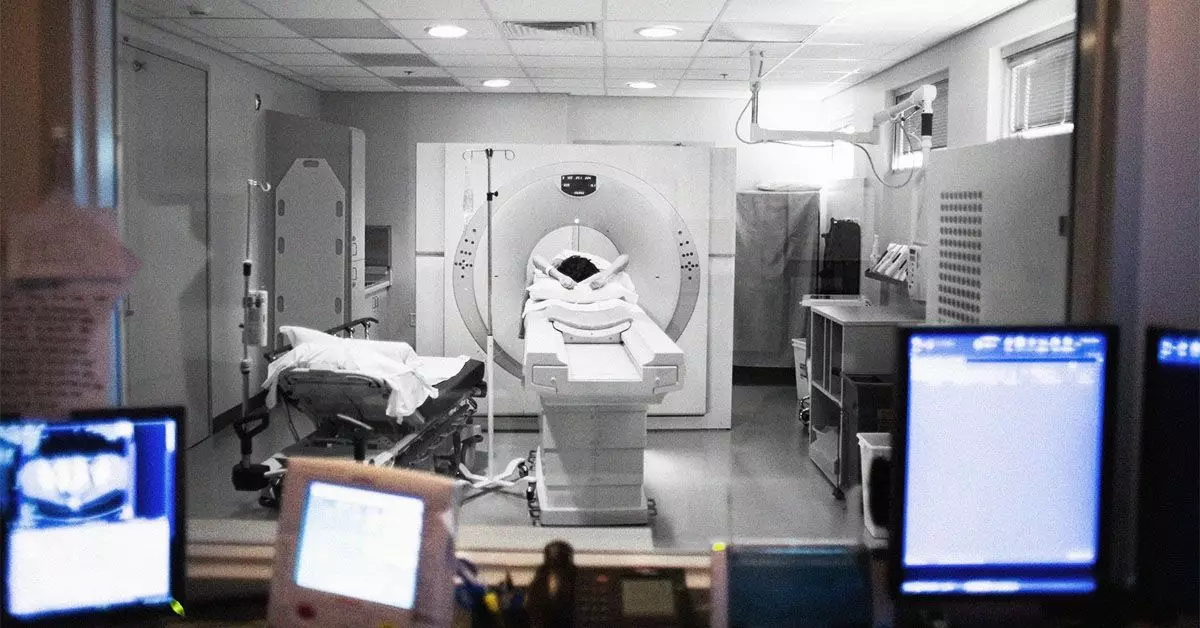Breast cancer remains one of the most pressing health concerns worldwide, leading to an ongoing need for diagnostic advancements and clarity. While conventional methods like mammograms dominate the landscape of breast cancer detection, alternatives like chest computed tomography (CT) scans are occasionally revelatory, though they are not routinely used for this specific purpose. Understanding the utility and limitations of CT scans in detecting breast cancer can facilitate better patient outcomes and enhance clinical practice.
Chest computed tomography stands as a sophisticated imaging technique that employs a series of X-ray images to generate detailed cross-sectional views of the body. This method excels in visualizing bones, organs, and soft tissue structures, thereby providing us with a comprehensive glimpse into the human anatomy. Although CT scans are primarily utilized to assess injuries, detect diseases, and guide surgical interventions, incidental findings related to breast cancer from these scans can be significant. For instance, a noteworthy study from 2021 concluded that incidental breast cancer indications are present in up to 28% of chest CT scans, a figure that highlights the unacknowledged potential of this technology within breast cancer diagnostics.
Specifically, there are instances in which breast lesions may manifest more effectively on CT scans, particularly in patients with dense breast tissue. Such findings could prove particularly valuable during diagnostic procedures, especially when anatomical characteristics complicate visual assessments through traditional screenings like mammograms.
While there are circumstances where chest CT scans can reveal breast abnormalities, it is vital to acknowledge that they are not part of the standard breast cancer screening protocol. The primary screening method remains the mammogram, which utilizes a lower dose of radiation and is designed specifically for assessing breast tissue. The reduced radiation exposure makes mammograms more favorable, especially for routine screenings in asymptomatic individuals.
Furthermore, although CT scans may occasionally reveal lesions overlooked by mammograms, they are not tailored for breast diagnostics and lack the specificity needed for effective breast cancer screening. Radiologists miss a significant portion of incidental breast cancer findings on chest CTs, with a recent study indicating that around 64.3% of such findings can go unrecognized—particularly smaller lesions that blend seamlessly into surrounding tissues.
Using CT Scans for Advanced Diagnostic Purposes
One area where CT scans can play a pivotal role is in assessing the progression of diagnosed breast cancer. Once a primary site of cancer has been established, CT imaging can help evaluate whether the disease has metastasized to vital organs, such as the lungs or liver. In such scenarios, a CT scan provides a dual benefit: aiding in patient monitoring while offering critical data that could influence treatment decisions.
Additionally, CT-guided needle biopsies utilize the imaging capabilities of CT scans to enhance the accuracy of tissue sampling. By directing the needle to exact locations within the breast—particularly in challenging-to-reach areas—doctors can gather tissue samples to ascertain the presence of cancerous cells effectively.
Understanding the indicators of potential breast cancer remains crucial for early detection and treatment. Patients should maintain an open dialogue with their healthcare providers, especially when encountering new breast abnormalities, such as the appearance of lumps or changes in nipple texture. While these could signify benign conditions, the importance of immediate medical consultation cannot be overstated.
Regular screenings, including annual mammograms as per guidelines, serve as foundational practices for early detection. The ability to identify breast cancer before it progresses is linked to improved treatment outcomes and survival rates. Awareness of screening schedules based on age and risk factors, alongside proactive self-examinations, can form a robust defense against the disease.
The intersection of CT scans and breast cancer underscores a multifaceted approach to diagnosis and monitoring. While CT scans are not the primary instrument for breast cancer screening, their capabilities to reveal incidental findings serve a critical role in the larger diagnostic framework. Advocating for careful examination of chest CT results can enrich our understanding of potential breast cancer signs, further complementing mammograms and other imaging modalities.
Ultimately, an engaged patient-provider relationship is essential for navigating the complexities associated with breast health. Early detection paired with an informed medical strategy can pave the way for effective treatment, ensuring ongoing challenges are addressed with both diligence and care. Awareness is the first step toward empowerment in breast cancer management.

